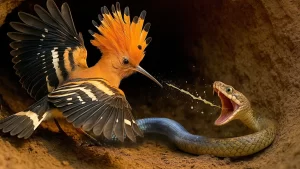Exploring Laos: Have you ever heard of the fascinating tradition of bride kidnapping or the unique custom of living with the wife’s family in Laos? Imagine young men silently “kidnapping” the woman they love to make her their wife—a practice that, though unusual, deeply reflects the cultural essence of the Land of a Million Elephants. The beautiful Laotian women, adorned in radiant traditional attire, exude not only gentleness but also strength and confidence, embracing the unique traditions of their homeland. And during the lively water festival, they transform into cheerful, vibrant fairies, immersing themselves in the joy and colors of the celebration.
Laos, the Land of a Million Elephants, is renowned for its serene beauty and tranquil pace of life. A decade ago, it was characterized by peaceful villages along the Mekong River, a quiet Vientiane capital, and simple bamboo huts. Today, Laos has evolved into a modern nation, yet it retains its rustic charm and gentle spirit. This small, humble land patiently awaits your exploration, offering a sense of peace and the unique beauty of life in its every breath.
See more:
Contents
- 1 1. Living with the Wife’s Family – A Special Laotian Tradition
- 2 2. The Unique Tradition of Bride Kidnapping
- 3 3. Laotians: The Champions of Beer in Southeast Asia
- 4 4. The Most Bombed Country in History
- 5 5. The Enigmatic Plain of Jars
- 6 6. Bun Pi May – The Water Festival of Renewal
- 7 7. The Unique and Flavorful Cuisine of Laos
- 8 8. A Sea Without a Coastline – The Wonders of Nam Ngum and Khone Phapheng
- 9 9. Traditional Textiles – Threads of History and Culture
- 10 10. The Land of Quiet Charms and Deep Mysteries
1. Living with the Wife’s Family – A Special Laotian Tradition
In Vietnam, living with the wife’s family is uncommon and sometimes seen as a disadvantage, but in Laos, it is a cherished tradition that strengthens family and community ties. On the wedding day, the groom dons traditional attire, carrying a sword on his shoulder and ceremonial offerings in his hand, as he steps into the bride’s home. This is not just a wedding custom but a profound gesture of respect and responsibility towards his wife’s family.
.webp)
Before entering the house, the groom stands on a stone slab covered with banana leaves and marigold flowers—a symbol of purity and respect. This sacred moment is marked by the bride’s younger sister washing the groom’s feet in a simple yet meaningful gesture of welcome. In return, the groom offers a symbolic fee to express gratitude to the bride’s family.
After the ceremony, the groom doesn’t immediately leave with his bride. Instead, he stays with her family for one to two years, sometimes longer, contributing to the household’s economic growth. This custom is not about asserting power or status but emphasizes harmony and mutual support—core values of Laotian culture.
Living with the wife’s family in Laos is more than a tradition; it is a lesson in love, respect, and partnership in marriage. It conveys the profound message that happiness is not the responsibility of one but the shared effort of both.
2. The Unique Tradition of Bride Kidnapping
Hearing the term “bride kidnapping” might evoke notions of force or conflict, but in Laos, this tradition symbolizes love and the bond between two individuals. Far from being coercive, the practice occurs only when the couple is in love and mutually agrees. It serves as a symbolic start to marriage, witnessed and supported by both families.
If the bride-to-be declines or is not ready, the groom must respectfully let her return home, emphasizing a core value: true love cannot be forced; it requires mutual consent and sincerity.
After the symbolic “kidnapping,” the groom’s family brings offerings of wine and chicken to seek the bride’s family’s blessing. This act is not merely a formality but a solemn promise to cherish, protect, and love the woman who has joined their family. The tradition not only unites two people but also strengthens the bonds between their families, creating a solid foundation for marriage.
In Laos, bride kidnapping is not merely a wedding custom but a heartwarming tale of love, respect, and family values—a cultural gem that reflects the depth and richness of life in the Land of a Million Elephants.
3. Laotians: The Champions of Beer in Southeast Asia
Laotians are known for their warm hospitality, joyful spirits, and an exceptional love for beer. The renowned Beerlao is not just a national pride but an integral part of daily life. For Laotians, beer is more than a drink; it’s a way to connect, celebrate, and bond with loved ones during family gatherings or festive occasions.
However, this widespread beer culture also reveals a darker side. With an average annual consumption of 15 liters per person, Laos ranks highest in beer consumption across Southeast Asia. While beer is seen as a joyful tradition, overindulgence has led to alarming consequences, including health issues and a high rate of traffic accidents.
Beerlao, while a symbol of camaraderie and festivity, also serves as a reminder of the fine line between enjoyment and excess. The beer culture in Laos not only tells the story of a nation that knows how to live life to the fullest but also poses a call for balance to protect health, safety, and happiness for individuals and the community alike.
4. The Most Bombed Country in History
Despite its serene and gentle appearance, Laos carries deep scars from its past. During the war, this small nation endured relentless bombing campaigns, becoming the most heavily bombed country in history. Millions of tons of explosives were dropped over Laos, leaving behind not only destruction but also a legacy of hidden dangers from unexploded ordnance that still lurks beneath its soil.
Yet, from this devastation, the Laotian people have demonstrated extraordinary resilience and creativity. The remnants of war—shell casings, bomb fragments—have been repurposed into homes, village gates, boats, and everyday tools. This transformation of instruments of destruction into symbols of survival and utility is a testament to the ingenuity and indomitable spirit of the Laotian people.
Every gate or house built from bombshells is more than just a physical structure; it is a statement of defiance against war and a celebration of life. It shows how a nation, even in the face of immense suffering, can rise, rebuild, and find hope amidst the ruins.
5. The Enigmatic Plain of Jars
On the misty highlands of Xiangkhouang lies one of the world’s most mysterious archaeological sites: the Plain of Jars. Scattered across the landscape are thousands of massive stone jars, some standing over 2.5 meters tall and weighing several tons. These ancient relics, estimated to date back 1,500 to 2,000 years, remain an enigma shrouded in time.
.webp)
Carved from sandstone, granite, and quartz, each jar carries questions that have yet to be answered. Were they used to store human remains, as part of burial rituals? Or were they vessels for food, water, or even wine? The lack of definitive answers only deepens the intrigue surrounding these massive artifacts, drawing visitors and scholars alike to uncover their secrets.
The Plain of Jars is more than a site of archaeological curiosity; it is a profound reminder of the passage of time and the mysteries of human history. As you walk among these silent stone sentinels, you can’t help but feel the weight of the past and the allure of untold stories etched into their weathered surfaces.
6. Bun Pi May – The Water Festival of Renewal
Each April, as the scorching sun heralds the onset of summer, Laotians gather to celebrate Bun Pi May, their traditional New Year. The festival is a jubilant explosion of joy, where water—symbolizing purification and renewal—takes center stage.
Laotians believe that water washes away the misfortunes of the past year, cleansing both body and soul. During the festival, people splash water on one another, their homes, and even their belongings, extending wishes of health and prosperity. Laughter and cheer fill the air as brightly dressed revelers turn the streets into rivers of celebration.
.webp)
Bun Pi May is more than a festival; it is a reminder to slow down, embrace the simple joys of life, and cherish the bonds that connect us. Amid the vibrant colors and the playful splashes, you can feel the heart of Laos—a spirit of renewal, harmony, and an unshakable connection to nature.
7. The Unique and Flavorful Cuisine of Laos
Laotian cuisine, much like its people, is unpretentious yet profoundly memorable. It blends bold flavors of spiciness and sweetness into a harmonious dance of taste. Sticky rice, a staple on every Laotian table, is more than just a food—it is a cultural emblem, symbolizing unity and sharing.
The smoky aroma of grilled fish wrapped in banana leaves evokes images of quiet villages along the Mekong River, while dishes made from insects, though unconventional, showcase the ingenuity and adaptability of the Laotian people. For the adventurous, dishes like fermented mulberry leaf tea or softened wood stir curiosity and push culinary boundaries.
Laotian cuisine is a testament to the connection between people and nature, where every ingredient tells a story of resourcefulness and respect for the land. It invites you to savor not just the flavors but the spirit of a country that takes pride in simplicity, creativity, and authenticity.
8. A Sea Without a Coastline – The Wonders of Nam Ngum and Khone Phapheng
Although Laos is a landlocked country, it possesses breathtaking natural wonders that rival any seaside destination. Nam Ngum, the largest freshwater lake in Laos, stretches out like a tranquil mirror reflecting the vast skies above. Surrounded by lush green hills and dotted with small islands, this “inland sea” offers a serene escape, inviting visitors to immerse themselves in its peaceful beauty.
Contrasting the calm of Nam Ngum is the majestic Khone Phapheng Falls, the largest waterfall in the world by width. Spanning nearly 10 kilometers, its roaring torrents crash down in a dramatic display of nature’s power. Known as the “Niagara of the East,” Khone Phapheng mesmerizes visitors with its thundering waters and serves as a stark reminder of the awe-inspiring force of the Mekong River.
These natural landmarks are not just destinations; they are windows into Laos’s soul—a country where nature reigns supreme and every corner is imbued with a sense of wonder and reverence.
9. Traditional Textiles – Threads of History and Culture
The traditional attire of Laos is much more than clothing—it is a woven tapestry of history, culture, and spirituality. Crafted meticulously by skilled hands, each piece of fabric tells a story, with patterns depicting mythical creatures, natural elements, and symbolic motifs.

The dragon represents strength and protection, while intertwined snakes signify unity and harmony. Floral designs celebrate the beauty of nature, while geometric shapes evoke ancient spiritual beliefs. Each thread carries a piece of Laotian heritage, creating garments that are as meaningful as they are beautiful.
Wearing traditional Laotian clothing is like stepping into the past, connecting with the values, beliefs, and artistry of countless generations. It serves as a visual testament to the resilience and creativity of a people who have preserved their identity through time.
10. The Land of Quiet Charms and Deep Mysteries
Laos is a land where life flows gently, like the waters of the Mekong, yet its stories and traditions run deep. From the enigmatic Plain of Jars to the joyful splashes of the Bun Pi May festival, from its creative use of wartime remnants to its delicate and flavorful cuisine, Laos offers a tapestry of experiences that both humble and inspire.
This is a country where simplicity meets profound depth, where ancient traditions coexist with a modern way of life, and where every corner holds a story waiting to be uncovered. Laos invites you to pause, to listen, and to embrace the beauty of a slower, more reflective pace of life.
Which of these cultural and natural treasures of Laos captivates you the most? Share your thoughts in the comments, and don’t forget to join us in exploring more wonders from the Land of a Million Elephants. Thank you for coming along on this journey, and we’ll see you in the next adventure!












